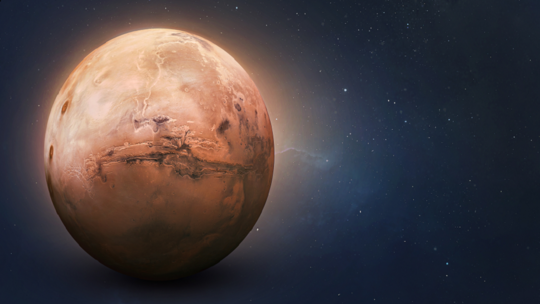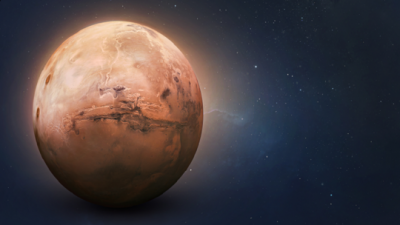NASA announced on Friday that the first rocks collected by "Perseverance" on the surface of Mars reveal that the "Jezero" crater was once a "sustainable environment that could have been suitable for life." This news comes following the successful mission of the rover in collecting two rock samples earlier this week: "Montdenier" and "Montagnac." The core samples contain a basaltic composition, which scientists say may have formed from ancient lava flows and could provide a timeline for the ancient lake—from its formation to its disappearance.
The level of alteration observed in the rock from which the core samples were obtained—as well as in the rock targeted by the team during the initial sampling attempt—indicates that groundwater was likely present for an extended period. "Perseverance" collected the rock samples on September 6 and 8, and since then, the team has been analyzing them from a distance of 239 million miles. Mitch Schulte, from NASA headquarters and a scientist on the mission program, stated in a release: "These samples have high value for future lab analysis on Earth. One day, we may be able to determine the sequence and timing of the environmental conditions represented by the minerals in this rock. This will help answer the big scientific question of the history and stability of liquid water on Mars."
The ground team identified salts within the rock samples that likely formed when groundwater flowed through them and altered the original minerals in the rock, or possibly when liquid water evaporated, leaving behind the salts. NASA shared in the statement: "The salty minerals in the first two rock cores may have trapped tiny bubbles of ancient Mars water. If they exist, they could serve as microscopic time capsules, providing evidence of the ancient climate and the potential for life on Mars. Salts are also known on Earth for their ability to preserve signs of ancient life."
Scientists hypothesize that groundwater originated from water that was flowing within "Jezero" or may have migrated through the rocks long after the lake dried up. While it is unclear whether the water that altered the rocks was present for tens of thousands or millions of years, NASA believes it is certain that water existed long enough to make the area more welcoming to microbial life in the past.
The next potential sampling site for "Perseverance" is only 656 feet away in "South Ceitha," a series of hills covered with sand dunes, rocks, and rock fragments. Currently, NASA and the European Space Agency are planning to launch two more spacecraft that will depart Earth in 2026 and arrive at Mars in 2028: the first will deploy a small rover to make its way to "Perseverance," collect the filled sample tubes, and transport them to the "Mars Ascent Vehicle"—a small rocket.
This rocket will launch and place the container into Martian orbit, meaning it will essentially float in space. At this stage, the third and final spacecraft involved in this challenging process will maneuver next to the sample container, capture it, and return it to Earth. After successfully re-entering the Earth's atmosphere, it will land in a military training ground in Utah in 2031, meaning that Mars samples will not be studied for another 10 years.




